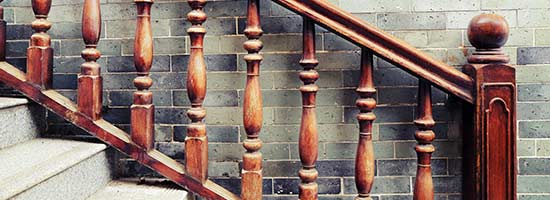
5 Ways to Prevent Fall-Related Injuries at Home
According to the National Safety Council, one in four adults falls each year in the United States, and more than 3 million older adults end up in emergency rooms annually because of injuries from falls. Many injuries of this nature also result in orthopedic issues that may affect knees, shoulders, hips, elbows, ankles, and wrists. Reduce your risk of being sidelined by serious joint, bone, or soft tissue problems and consider the following ways you can prevent fall-related injuries at home.
1. Remove Clutter
It’s surprisingly easy to get into the habit of placing shoes or other odds and ends on steps or other unusual places without thinking much about it. Unfortunately, it’s clutter like this that can result in an accidental fall when you least expect it. Make an effort to regularly declutter your home to maintain your safety.
2. Look For and Eliminate Fall Hazards
Just because you’ve never experienced a serious fall at home doesn’t mean there aren’t some potential fall hazards you should eliminate. With throw rugs, for instance, double-sided tape can keep them from slipping as you walk over them. And check for things like oddly placed furniture that’s within main pathways and loose steps or floorboards.
3. Make Sure You Have Sufficient Lighting
Regardless of your age, insufficient light can result in some unexpected stumbles. Improve your home’s lighting by making it bright where you need the most light. Pay particular attention to lighting around stairs and in commonly used rooms like kitchens and bathrooms. Also, keep flashlights in a convenient spot for times when the power goes out.
4. Use Appropriate Safety Devices
If you or someone in your household is older and having some issues with stability, consider installing handrails or grips to prevent falls. The bathroom is a good place to have safety devices like this since slip and falls are more likely to happen when getting out of a wet shower or bathtub.
5. Keep Frequently Used Items in Easy Reach
Reduce your need to reach for stuff on high shelves by placing frequently used items within easy reach. You might do this with things like dishes, canned goods, and appliances. You can also make it a point to get out a step stool or ladder. For times when you do need to reach high spots, ask someone to hold the ladder or lend a hand.
If you’re experiencing issues with balance and coordination, an orthopedist may be able to recommend exercises that could improve your stability. Even if you have existing joint problems or an underlying condition like arthritis, you may benefit from yoga and similar controlled-movement disciplines that place an emphasis on posture, balance, and flexibility. Healthy diet and exercise habits can also strengthen bones, joints, and muscles and help maintain your stability.

